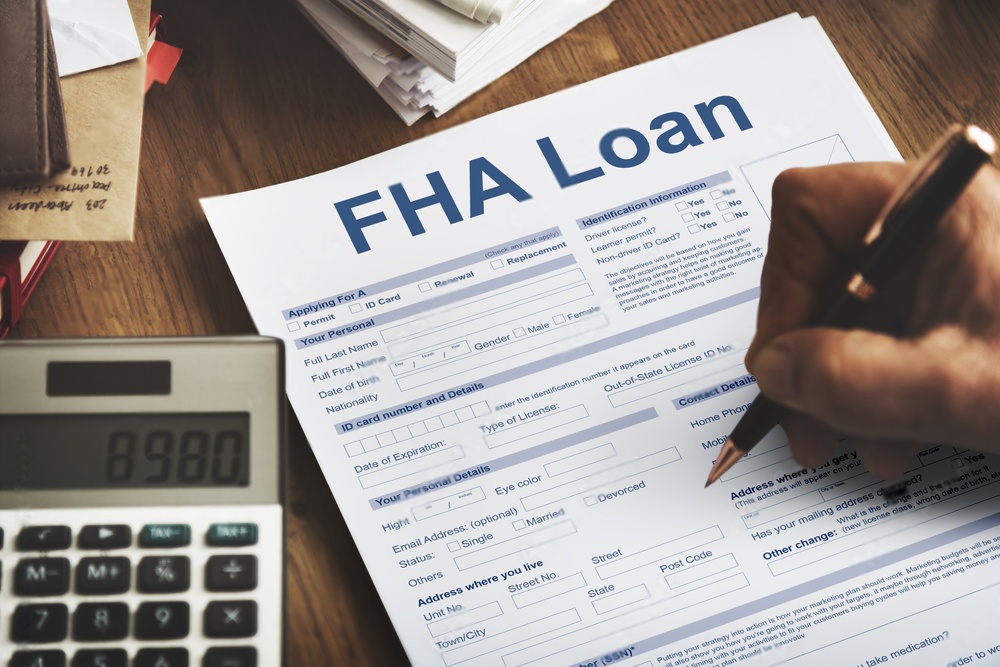A recent announcement from Fannie Mae has revealed a sizable modification to the down payment requirements for multifamily properties. The powerhouse in mortgage lending will accept 5% down payments for loans on multi-family owner-occupied homes in the near future. Naturally, there are prerequisites for eligibility. However, this regulation modification offers a chance for those who are considering buying multifamily properties.
In the past, Fannie Mae requested a 15–20% down payment for multi-family homes owned by owners. However, potential purchasers of multi-family residences will only be required to submit a 5% down payment as of the weekend following November 18, 2023.
This reduction in the down payment requirement holds the promise of expanding access to multi-family properties, making them more financially feasible for a broader range of aspiring homeowners. The move is poised to unlock opportunities for those who may have previously found the financial barriers to entry insurmountable.
Previous Down Payment Requirements for Multi-Family Homes
The previous down payment requirements, hovering between 15 and 20%, posed a formidable challenge for individuals aspiring to own and reside in multi-family homes. The higher upfront costs limited the pool of eligible buyers and restricted access to the wealth-building opportunities associated with multi-unit properties.
Fannie Mae’s historical standards were notably rigid, especially when it came to multi-family dwellings. The shift in norms was long overdue, recognizing the evolving dynamics of the real estate market and the changing aspirations of modern homebuyers. The reduction in down payment requirements signals a departure from the traditional barriers, making the prospect of owning a multi-family property more inclusive and appealing.
Fannie Mae’s New Down Payment Requirements
Fannie Mae’s recent policy overhaul extends beyond a mere reduction in down payment requirements; it represents a comprehensive reimagining of the financial landscape for owner-occupied multi-family homes.

Applicability to Duplexes, Triplexes, and Quadplexes
The down payment adjustment isn’t limited to a specific category within the multi-family housing spectrum. Fannie Mae’s progressive move applies universally, encompassing duplexes, triplexes, and quadplexes alike. This inclusive approach recognizes the varied preferences and needs of potential homeowners, providing flexibility in choosing the type of multi-unit property that aligns with their goals.
Maximum Loan Amount Increase
In conjunction with the down payment adjustment, Fannie Mae has concurrently increased the maximum loan amount, further enhancing the financial prospects for aspiring multi-family property owners.
Cap Raised to $1,396,800 for 2-4 Unit Properties
One of the most noteworthy aspects of Fannie Mae’s policy shift is the significant boost in the maximum loan amount for properties with two to four units. The cap has been raised to an impressive $1,396,800. This amplification opens doors for prospective buyers to explore larger and potentially more valuable multi-unit properties while enjoying the benefits of a reduced down payment.
This strategic alignment of a lower down payment requirement with an increased loan cap provides a unique opportunity for individuals to maximize their investment potential in the multi-family housing market.
Applicable Loan Types
Fannie Mae’s commitment to facilitating multi-family homeownership is further underscored by the broad spectrum of applicable loan types.
1. HomeStyle Renovation
Homebuyers seeking to personalize and enhance their multi-family properties can leverage the HomeStyle Renovation loan option. This allows for financing both the purchase and renovation costs, providing a comprehensive solution for those aspiring to turn a property into their ideal home.
2. HomeReady
The HomeReady program offers additional flexibility, particularly for first-time homebuyers. With a down payment as low as 5%, this option aligns seamlessly with Fannie Mae’s revised policy, empowering a new wave of homeowners to explore the multi-family housing market.
3. No Cash-Out Refinances
For existing homeowners looking to tap into the equity of their multi-family properties, Fannie Mae’s new policy accommodates no cash-out refinances. This allows for strategic financial maneuvers while still benefitting from the reduced down payment requirements.
4. Standard Purchase Loans
Standard purchase loans remain a cornerstone of Fannie Mae’s offerings, providing a straightforward and accessible avenue for owner-occupants to secure financing for their multi-family home purchases.
Income-Generating Potential of Multi-Unit Properties
Fannie Mae’s revised down payment requirements not only open doors for homeownership but also present unique opportunities for individuals to harness the income-generating potential inherent in multi-unit properties.
House Hacking Strategy
Fannie Mae’s new policy introduces the concept of ‘house hacking, a strategic approach to multi-family homeownership that can revolutionize the traditional housing paradigm.
1. Living in One Unit, Renting Out Others
The house hacking strategy encourages prospective buyers to live in one of the units while renting out the others. This rental income has the potential to offset or even completely cover the mortgage payment, transforming the property into a self-sustaining investment.
2. Building Equity and Offsetting Housing Costs
Beyond the immediate financial benefits, house hacking allows individuals to build equity in the property while simultaneously offsetting their own housing costs. This dual-purpose approach creates a pathway for prospective homebuyers to achieve financial stability and wealth accumulation through strategic property management.
Consideration of Becoming a Landlord
While the house hacking strategy is financially advantageous, it does come with the responsibility of becoming a landlord. Prospective homebuyers must carefully consider their comfort level and preparedness to take on the role of managing rental units. This includes addressing tenant needs, ensuring property maintenance, and navigating the intricacies of the landlord-tenant relationship.
Assessing Multi-Family Property Ownership
When delving into the prospect of multi-family property ownership, careful consideration of financial factors is paramount. The reduced down payment requirements set by Fannie Mae create a unique opportunity for prospective buyers to explore this avenue with enhanced financial flexibility.

1. Flexibility in Budget
Fannie Mae’s policy shift allows for greater flexibility in budgeting. With a lower down payment requirement of 5%, individuals can allocate more of their resources towards other aspects of property ownership, such as renovations, improvements, or even diversifying their investment portfolio. This newfound flexibility in budgeting is a key advantage for those looking to optimize their financial strategy.
2. Offset Housing Costs
Multi-family property ownership, especially when utilizing the house hacking strategy, presents a remarkable opportunity to offset housing costs. By living in one unit and renting out others, homeowners can leverage rental income to cover or substantially reduce their mortgage payments. This innovative approach not only makes homeownership more affordable but also transforms the property into a potential income generator.
Market-Specific Analysis
Understanding the dynamics of the local real estate market is crucial when contemplating multi-family property ownership. Fannie Mae’s policy change opens the door to a broader range of possibilities, but a market-specific analysis is essential to make informed decisions.
1. Researching Average Rent Prices
Prospective buyers should conduct thorough research on average rent prices in their target area. Understanding the rental market dynamics helps in estimating potential rental income, a key factor in determining the feasibility of multi-family property ownership. Fannie Mae’s policy aligns with the potential for rental income to play a significant role in offsetting housing costs.
2. Evaluating Vacancy Rates
In addition to rent prices, evaluating vacancy rates is crucial. A lower vacancy rate implies a more stable rental market, reducing the risk of income loss for potential landlords. This analysis allows buyers to make informed decisions about the income-generating potential of the property and its resilience in the face of market fluctuations.
Making Informed Decisions
Armed with financial insights and a market-specific analysis, prospective buyers can navigate the path to multi-family property ownership with a strategic mindset.
1. Exploration of Multi-Family Unit Possibilities
Fannie Mae’s down payment adjustments pave the way for exploration into various multi-family unit possibilities. Prospective buyers can consider duplexes, triplexes, or quadplexes based on their preferences and investment goals. The flexibility in down payment requirements offers a diverse range of options, allowing buyers to align their choices with their vision for homeownership.
2. Balancing Financial Goals
Ultimately, making informed decisions involves striking a balance between financial goals. While the reduced down payment eases the initial financial burden, buyers must align their investment with long-term objectives. This could include considerations such as building equity, generating rental income, or even expanding their real estate portfolio. Fannie Mae’s policy opens avenues for strategic decision-making that aligns with individual financial aspirations.
Preparation for Multi-Unit Homeownership: Evaluating Savings
Before embarking on the journey of multi-unit homeownership, a meticulous evaluation of savings is imperative. Fannie Mae’s policy, while reducing the down payment requirement, still necessitates a thorough understanding of one’s financial position.

1. Maintaining an Emergency Fund
Even with a reduced down payment, it’s crucial to maintain an emergency fund. Unforeseen expenses, repairs, or periods of vacancy can impact cash flow. An emergency fund acts as a financial safety net, ensuring that homeowners can navigate challenges without compromising their investment.
Running the Numbers
Running the numbers involves conducting customized market research tailored to the specific circumstances of the prospective buyer.
Customized Market Research
Prospective buyers should delve into the specifics of their desired market. This includes understanding local property values, anticipated rental incomes, and potential expenses. Customized market research provides a realistic financial projection, enabling buyers to make informed decisions about the viability of multi-family property ownership.
Exploring Loan Options
Fannie Mae’s reduced down payment requirements open the door to various loan options, and prospective buyers should explore these choices in depth.
1. Fannie Mae vs. FHA Loans
While the current downpayment drop is very enticing, there are alternative options available for buying a multi-unit property with a little down payment besides the Fannie Mae loan. When buying a multi-unit property, owner-occupants can also use FHA loans with a down payment as little as 3.5 percent.
2. Loan Application Process
Preparation for multi-unit homeownership culminates in the loan application process. Buyers must submit detailed financial information to lenders, showcasing their ability to manage the financial responsibilities of owning a multi-family property. This step is critical in securing the necessary financing and moving closer to the realization of homeownership goals.
Removal of FHA Rule 75 for 3-4 Unit Properties
FHA Rule 75, which previously mandated stringent criteria for 3-4 unit properties, has been eliminated. This removal represents a significant stride in simplifying the pre-approval process for multifamily homes and streamlining the overall buying process.
1. Simplifying Pre-Approval for Multifamily Homes
The removal of FHA Rule 75 simplifies the pre-approval process for individuals seeking to purchase 3-4 unit properties. Previously, the rule necessitated that 75% of rental income exceed the monthly mortgage, adding a layer of complexity to the approval process. Now, with this hurdle eliminated, aspiring buyers can navigate the pre-approval stage with greater ease.

2. Streamlining the Buying Process
The elimination of FHA Rule 75 contributes to the overall streamlining of the buying process for multifamily homes. This change reduces unnecessary complexities, allowing buyers to focus on essential aspects such as property selection, financing options, and preparing for homeownership.
3. Enhanced Accessibility
The streamlined process not only benefits prospective buyers but also enhances accessibility to multifamily properties. With fewer hurdles in the approval process, a wider range of individuals can consider and pursue the opportunities presented by Fannie Mae’s 5% down payment policy for 3-4 unit properties.
Application Process Commencement
As Fannie Mae’s transformative policy comes into effect after November 18, 2023, prospective buyers are presented with an opportune moment to embark on their multi-family homeownership journey.
Prospective buyers can conduct market research, evaluate their financial situation, and explore loan options. The preparation phase is instrumental in ensuring a smooth transition into the application process, empowering buyers to make informed decisions aligned with their homeownership goals.
Benefits for Owner-Occupant Landlords
For those considering owner-occupied multi-family properties, Fannie Mae’s policy change offers a multitude of benefits that extend beyond mere affordability.

1. Reducing Mortgage Payments
The primary advantage for owner-occupant landlords lies in the significant reduction of the down payment requirement to just 5%. This reduction translates directly into lower mortgage payments, providing immediate financial relief. The ability to secure a multi-family property with a modest down payment enhances the feasibility of this unique homeownership strategy.
2. Gaining Landlord Experience and Building Equity
Being an owner-occupant landlord has benefits beyond just monetary ones. It also provides access to worthwhile experiences. In addition to lowering living expenses, renting out additional units while you live in one gives you practical property management expertise. Simultaneously, the rental income generated contributes to building equity, fostering long-term financial growth for savvy homeowners.
Beacon Lending can help you become a Homeowner
Fannie Mae’s policy change represents a game-changing opportunity for prospective homeowners. Fannie Mae’s role in expanding access to multi-unit property ownership is significant. By redefining down payment standards and eliminating hurdles such as FHA Rule 75, Fannie Mae is actively shaping a more accessible and inclusive real estate market. The commitment to diverse loan offerings and the promotion of owner-occupant landlord strategies demonstrates a forward-thinking approach to addressing the evolving needs of potential homeowners.
Fannie Mae’s encouragement of investment through a 5% down payment option is not just a financial incentive; it’s an invitation for individuals to actively participate in shaping their financial future. The ability to offset housing costs, build equity, and gain valuable landlord experience positions multi-family property ownership as not only a residence but also a strategic investment. If this is an opportunity you want to leverage, contact us now at Beacon Lending. We’re here to help you build your home!
About the Author
NMLS# #244003
Brian Quigley has been in the Denver mortgage industry since 2003. Customer satisfaction has been his top priority while guiding clients through the home loan qualification process. He is proficient in all types of mortgage financing including FHA/VA, Conventional, USDA, Jumbo, Portfolio, 1031 Exchanges, Reverse Mortgages, Refinancing, Construction loans, and FHA 203K loans.